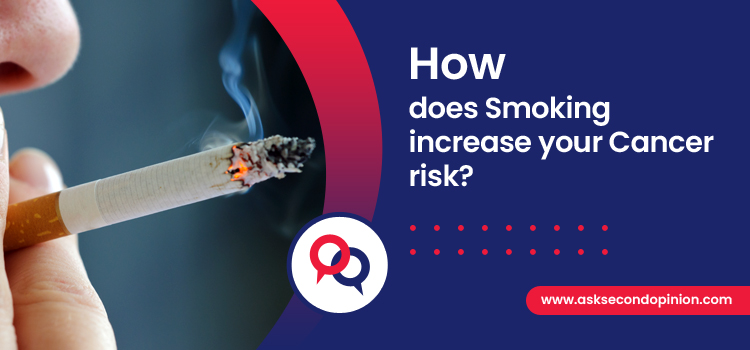
Many toxic substances in cigarettes affect other organ systems because they cause cellular and chromosomal damage. The toxins are absorbed by the blood vessels that serve the lungs, and the toxins reach all systems. There is no safe level of smoking. It is better to quit them at the earliest to aviod any severe diseases in future. If you feel difficult to quit smoking, you may have Online Doctor Counseling that’s available on Second Opinion app.
What are the parts that would affect
A smoker has about 30 times more risk than a nonsmoker for developing lung cancer. Smoking is also associated with cancer of the oral cavity, throat, kidney, bladder, rectum, liver, pancreas, stomach, cervix, colon, esophagus and leukemia.
What is bronchi and its causes?
The lining in your bronchi (the branches in the lungs) are damaged when you smoke. They harden and become non – functional. They fail to produce mucus-like they are supposed to and lose their structural integrity, too, causing pulmonary disorders.
The thing to be noted at this point. The bronchi are vulnerable to mutation, and they are never going to be functionally the same.
Mutation is the mother of cancer
As a coping mechanism, your body replaces the cells in the lining with different types of cells (which aren’t fictionally ideal). However, the coping mechanism won’t work if the smoking continues. Or if the damaging triggers continue (like inhaled pollutants that otherwise do not affect healthy cells).
How smoking increases the risk of lung cancer
The aforementioned vulnerability to mutation heightens when a continuous cell division occurs as an attempt to produce new cells to replace the damaged cells. The smoke / damaging triggers act like cancerous mutagens on these vulnerable cells.
With the interplay of these two things, there is a good chance that any vulnerable cell (healthy or damaged) in the lungs turns into a malignant (cancerous) tumor. That’s how, in a very concise and one of the ways, smoking increases the risk of lung cancer.
Why Non-Smokers gets cancer
There are some estimates that the lifetime risk of lung cancer in a very heavy smoker is about 30% overall, whereas it is 1% or less in nonsmokers. This will translate into about a third of very heavy smokers developing lung cancer. Also, 15 to 20 of every 100 patients who have lung cancer are lifelong nonsmokers. Some get it because of secondhand smoke, and some get it for unknown reasons.
How fast one can get cancer while smoking
People who start smoking at younger ages are at higher risk later in life. Lung cancer rates begin increasing in the mid to late 40s and peak in the late 70s. Many people think low tar or filtered cigarettes are safer. The truth is most people will compensate for these cigarettes by inhaling deeper or smoking more cigarettes to satisfy their need for nicotine.
The risks are much more invasive than just the lungs. There is plenty of research that has linked smoking to lung cancer. Therefore the fact that smoking increases the risk of lung cancer has become undeniable. If you have been diagnosed with Lung cancer, a second opinion can confirm the type and stage of the disease. Rare cancer can mean a greater danger of misdiagnosis, as it may be a disease barely seen by the pathologist.
